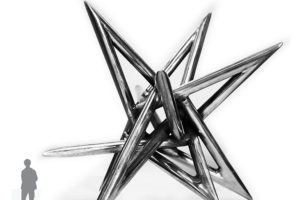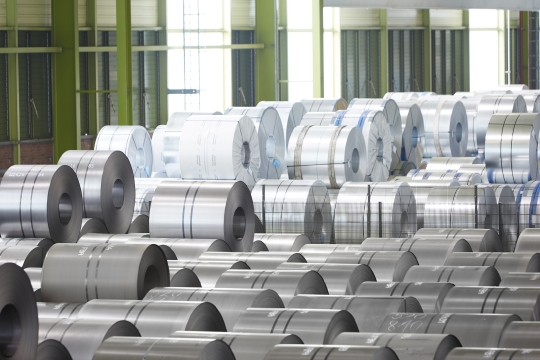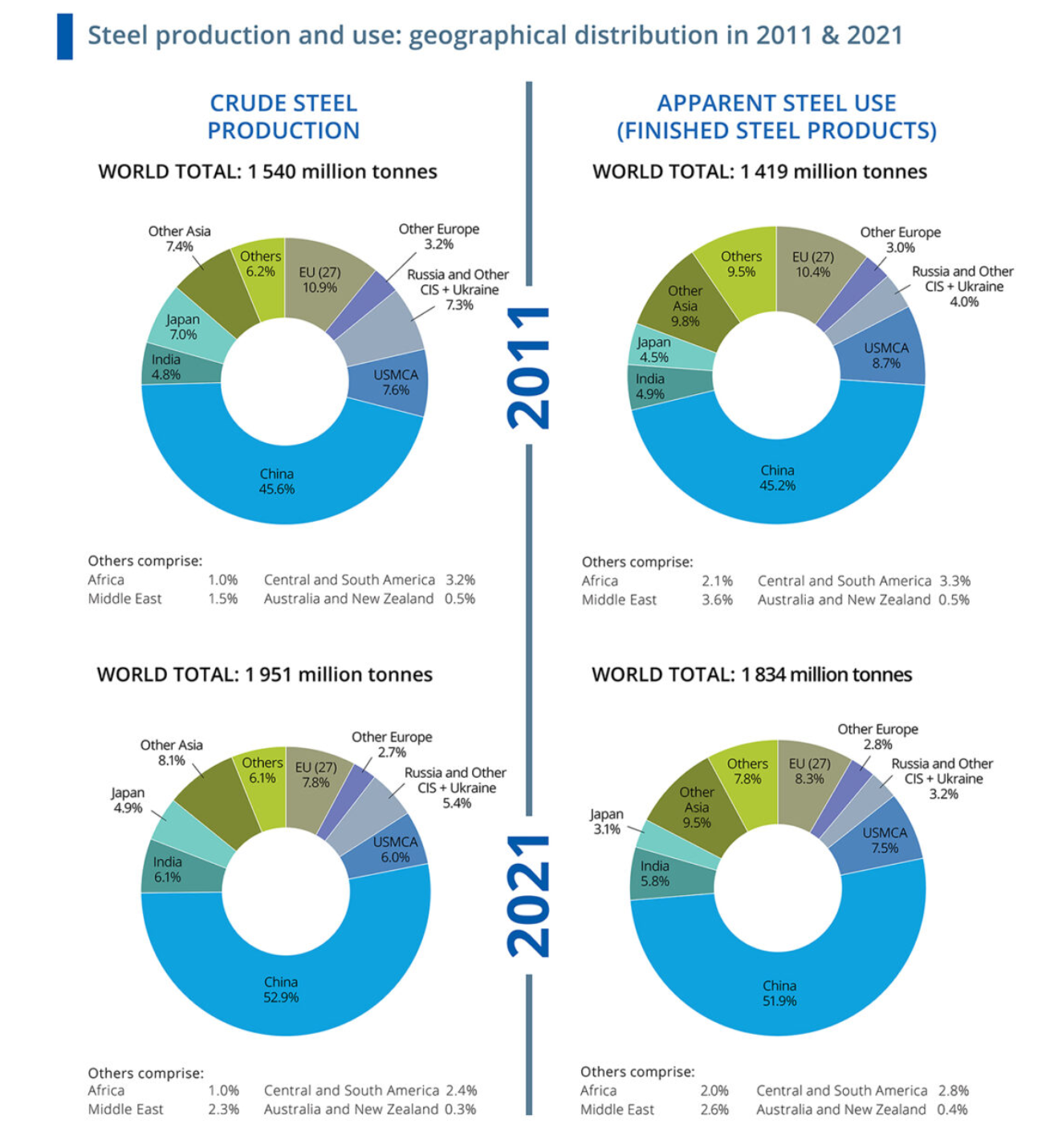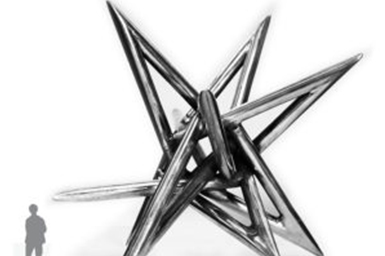A Danish artist has worked with a team of engineers to create a unique, steel-built, free-standing sculpture that acts as a time capsule and can withstand the pressure of deep-sea conditions.
Kristian von Hornsleth’s work, the Star of Veijle, is one of a pair of ground-breaking 10m3 sculptures. One sits on land in the town of Veijle, Denmark, and the other sits 11km below sea level just off the coast of Guam.
The deep-sea sculpture has been designed to act as a DNA storage unit that will function for at least 10,000 years. Hornsleth secured DNA contributions from more than 3,000 people worldwide that will be kept safely within the structure of the second sculpture.
This nano-engineered stainless steel outer surface means that the sculpture surface does not interact with or contaminate the natural environment while guaranteeing the integrity of the structure that protects its DNA cargo.
Built with a corrosion-resistant stainless-steel structure and finish, the sculpture will contain a sealed chest containing hair and blood samples and will maintain its shining finish for millennia.
The extreme longevity required of the project forced Hornsleth to consult with a team of engineers, as the artist was insistent that the DNA contents remain useable for potential cloning purposes in some far-off future.
“I want to monumentalise our fear of dying, to give people hope. You’ll know that there’s a piece of you in the ocean that will be there after you’re gone,” says Hornsleth. This combination of artistic and practical scientific considerations presented a unique set of challenges.

The sculpture’s electro polished stainless-steel pipe structure makes it immune to corrosion for at least 10,000 years
Around 11km down, the conditions at the bottom of the Mariana trench, the deepest of its kind in the world, are extreme. The water pressure is 1,000 times greater than at sea level, but life can still be found, with microbial life forms and even some species of fish discovered on the trench floor.
This surprising abundance of life formed a key part of the discussions between Hornsleth’s engineering team and the university of Guam’s geology department, as it was vital that the Deep Storage Project does not cause any damage to the natural environment of the Mariana trench.
The team eventually settled on a ‘hermetically sealed, electro polished stainless-steel pipe structure’ that would guarantee no rust or erosion in the oxygen void of the trench floor, leaving no impact on the local environment.
Electro polishing removes the outer layer of the stainless steel using an electrochemical solution that strips away any embedded contaminants, micro cracks or other surface imperfections that can impact longevity and performance.
This nano-engineered stainless steel outer surface means that the sculpture surface does not interact with or contaminate the natural environment while guaranteeing the integrity of the structure that protects its DNA cargo.
The perfectly smoothed finished will prevent any organic life from finding purchase and dulling its finish, something that Hornsleth says will allow the sculpture and its contents to be easily discovered and returned to the surface even after millennia in the depths.
The future may be uncertain, but one thing can be relied upon: the enduring power of steel that made possible this unique monument to human ingenuity.







 EXPOGROUP Supports The"GO GREEN"
EXPOGROUP Supports The"GO GREEN"